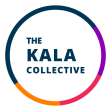This article is written by our member Divine Rizia @divine-rizia-r-v

We’re witnessing the gamification of art styles—reduced to filters, stripped of context. Diving into the popular discourse: Can the soul of an artist be generated by an algorithm?
It’s been more or less fifteen days. Fifteen days since a trend began surfacing across social media platforms. A trend that hasn’t died down yet. A trend that is seen as a ‘fun’ and ‘whimsical’ one and something ‘that shouldn’t be taken so seriously’. A trend that has taken over our feeds. Yet here I am, writing this from a place of saturation, helplessness, and quiet exhaustion. There has been a recent surge of interest in AI art in the mainstream contemporary art world. Especially on image-centric social media platforms like Instagram, AI artists and content creators are becoming increasingly popular. From dreamlike forests to cozy kitchens, AI-generated visuals are now capturing Studio Ghibli’s aesthetic. But behind these visually charming pieces lies a more complex dialogue—What does this mean for human artists? Where do ethics, creativity, and homage intersect? And more urgently, who gets to create AI art, who can afford it, and how is it consumed and distributed across social media platforms?
Studio Ghibli, co-founded by legendary animator Hayao Miyazaki, has long held a sacred space in the hearts of animation lovers. Its style—marked by hand-drawn textures, gentle storytelling, and a reverence for nature—is not just an aesthetic but a philosophy. It celebrates slowness, empathy, and wonder in a world that often forgets them. So when AI tools started churning out “Ghibli-fied” images, it is quite contradictory to the philosophy in itself. It feels jarring. If Ghibli’s world is rooted in slowness, care, and human touch, then what does it mean when that world is reimagined by an algorithm trained to replicate?
Trend evolving or mutating?
This goes without saying but just like any other viral trend, this trend would also eventually die down. Now as I scroll through my socials, it’s not just about ghibli anymore. A new behavior is taking shape. ‘Instagrammers’ and content creators are now prompting people to try various other art styles too. What started as Ghibli-inspired outputs is now a carousel of AI prompts:
“Turn this into Disney style!”
“Make it a chibi!”
“Now surrealist!”
—All just a click away.
We’re witnessing the gamification of art styles—reduced to filters, stripped of context. Diving into the popular discourse: Can the soul of an artist be generated by an algorithm?
The Convenient Narratives
Some draw comparisons to early photography—how it was once dismissed as mechanical and not real art. Now, they argue, AI is just another tool in the artist’s kit. Others suggest we embrace AI, integrate it, and adapt.
But these arguments miss the core issue.
AI art generators like Midjourney and DALL·E work by learning from vast datasets of images—including, often controversially, works by human artists : without consent, without credit, and without compensation. This brings up a deeper concern on how AI democratizes creativity and also dilutes artistic integrity.
‘AI makes art even more accessible’
Yet another hollow and mindless argument. Art by its very nature is accessible. Just that nobody or the vast majority don’t want to do traditional work and they’re comfortable surpassing years of human labor, trail, intuition, and emotional nuance of an artist and call it accessible. AI offers an easy way out—and many are taking it.
Miyazaki himself has been openly critical of AI, once calling AI-generated art “an insult to life itself.” The irony of his signature style being replicated by AI—and widely shared—is not lost on many.
There are no clear-cut rules yet. Most AI platforms operate in a grey area when it comes to copyright, training on artworks without formal permission.
In 2022, there was a short-lived movement on instagram on ‘Ban AI’ for art that gained traction. But today, we see a surge in AI-generated art content, not resistance. The question is no longer whether this is happening—it is: Who profits from it? And what happens to original creators in a world flooded with infinite replicas of their work?
Capitalism, Consumption, and Creative Erosion
AI art and capitalism go hand in hand. The commodification of AI-generated visuals feeds into broader systems of economic exploitation. Art became less mysterious, more attainable, and consequently, less enchanting due to technical reproduction.
Walter Benjamin once wrote that technical reproduction strips art of its aura. In today’s context, that aura is disappearing under a flood of machine-made images. What’s left is content—fast, consumable, forgettable.
One must also look into the ethical considerations while using AI. Nothing is ever free. if it’s free, you and/or your data are the price. The hidden costs are high—paid in privacy, labor, and authenticity.
For now, artists stand at a crossroads. AI can replicate the look, perhaps even the mood—but not the lived experience, the years of struggle, training, doubt, joy, and love that goes into real art.
As I part, I plead for mindfulness and ethical usage of AI by individuals. And I call for platforms that empower, not exploit. For transparency in how AI models are trained. And most of all, I’m asking for the world to not forget the humans behind the art.
Because art, at its core, is not just about what is made.
It’s about who makes it—and why.
About the Author
Divine Rizia R V is an Assistant Professor in the Department of Visual Communication at Loyola College, Chennai. With a background in art, photography, and graphic design, she bridges industry experience with academia. Her primary focus is on understanding the multifaceted realities of society through the lens of Film, Digital Media, and other Visual Media.
